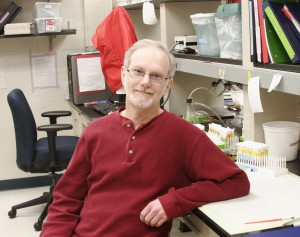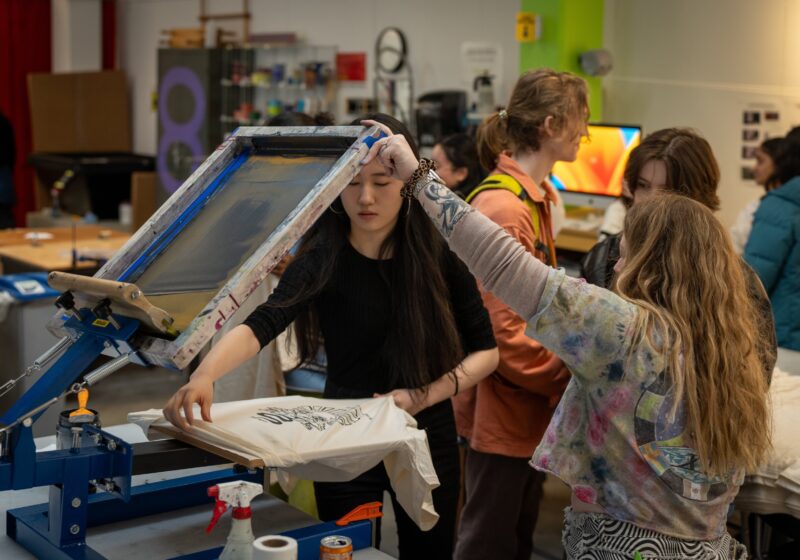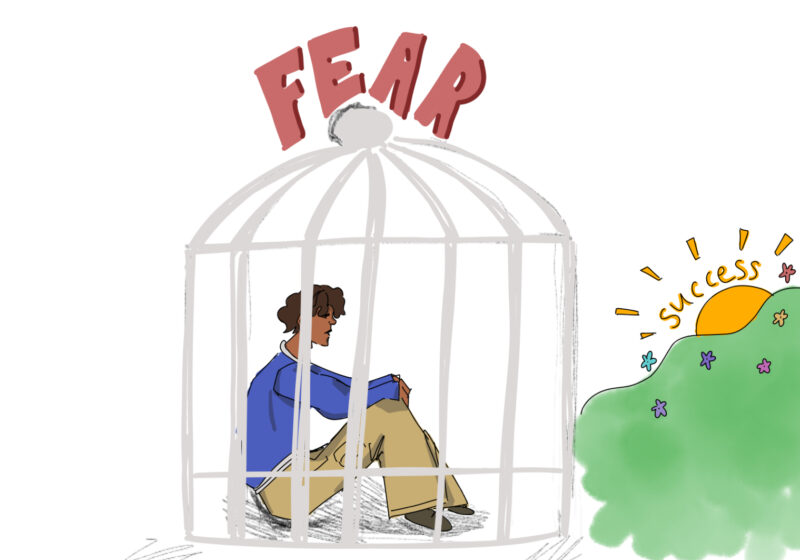
Drue Sokol, Photo Editor
For a long time, one of the biggest questions of biology was how specific genes could cause species to differ in their physical characteristics. On Friday, Feb. 24, Science Magazine published the groundbreaking findings of genetics researchers at UR who have finally started to answer this question.
Biology professor John Werren and graduate student David Loehlin (now working on his postdoctoral degree at University of Wisconsin – Madison) managed to isolate a gene called unpaired (upd) that plays a role in the development of physical characteristics through regulation of cell growth.
The gene was identified in two wasp species: Nasonia giraulti, which has large wings, and Nasonia vitripennis, which has small wings. By crossbreeding the two, the researchers were able to identify the gene upd as being a major player in determining wing phenotypes or characteristics.
Werren and Loehlin, with the help of a number of undergraduate researchers, not only identified upd as a gene responsible for species differentiation, but also located its chromosomal position in the two Nasonia species as well as the differences in its DNA sequence between these two species.
“It was challenging figuring out how to study the growth of wings in these wasps, since nobody has really done that before,” Loehlin said. “Fortunately, UR has a great biology department, so I was able to go down the hall and get advice from people like Henri Jasper and David Lambert, who are experts in growth and development.”
While it is common to study the fruit fly species Drosophila when researching genetics, Werren and Loehlin chose to study Nasonia wasps instead due to the simplicity of their genetic and breeding mechanisms.
“The practical reason [for studying Nasonia] is that there just aren’t big enough size and shape differences to study in Drosophila, whereas each Nasonia species has a different wing size,” Loehlin said. “My big interest is in understanding the diversity of life on earth, so if we only study fruit flies and mice and yeast, that only gets us so far.”
In fact, this research goes even further than wasps. Ultimately, this information can give scientists a lot of insight into how growth genes work, or sometimes fail to work, in humans. Upd is functionally related to a set of genes in humans called interleukins, which are implicated in cell growth as well. This means that understanding how upd affects cell growth and ultimately phenotypic differentiation in wasps also means, by default, that scientists now have a greater understanding of how similar genes function in humans.
This new information can also provide insights into the origins of cancer and other diseases where cell growth and regulation goes wrong.
“This work gives us a different perspective on the genetics of how growth works,” Loehlin said. “We’re hoping that this study, and other genetic studies of biodiversity and evolution, will give disease researchers a better handle on the function of these conserved growth genes.”
Part of what enabled this research to answer a question that scientists have been asking for years are the new tools available for sequencing DNA, which is opening the doors to understanding the evolutionary foundation of the great diversity among living organisms. However, there is still a long way to go in this field of research.
“One big next step [in this research] is that the gene we mapped looks like it’s in one of the core cell signaling pathways that all animals use,” Loehlin said. “Humans use this pathway for inflammation and cell growth, and it gets screwed up in diabetes and a lot of cancers.”
It took painstaking work to come to this jumping off point for understanding biodiversity, but the hope is that, going forward, researchers will fly with it.
Sklar is a member of the class of 2014.






